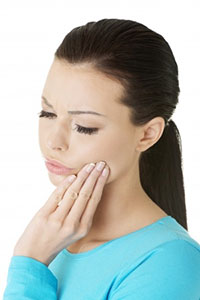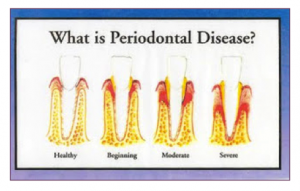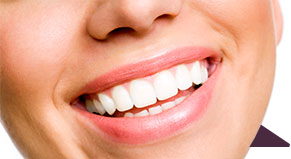World Oral Health Day Campaign
March 27th, 2017

Healthier mouths achieve happier lives — that’s the motto of the World Oral Health Day campaign. The year-long campaign is launched every year on March 20th as part of a movement to create more awareness about the importance of having good oral health. The goal is to bring together all members of communities — government, health associations, and the public, to work toward preventing oral disease and maintaining mouth health.
The History of The World Oral Health Day Campaign
Although March 20, 2013 was the first date the campaign was widely recognized, it had its roots further back to 2007. The campaign was started by FDI World Dental Federation, a worldwide organization of dental professionals representing over 135 countries. The first celebration had originally taken place in September, but was later moved to March 20 for two reasons – September conflicted with an important Dental Congress meeting of the organization, and the significance of the numbers “32” and “20” could be represented in the date March 20, or 3/20. (Adults should have 32 healthy natural teeth, and babies or seniors should have 20).
Each year, the campaign focuses on a specific theme to target awareness and improvement efforts in that area. Past themes have included:
2013: Healthy Teeth for a Healthy Life
2014: Celebrating Healthy Smiles
2015: Smile for Life!
2016: Healthy mouth, Healthy Body
Each theme is specific enough to spark focused action but broad enough to be able to include individuals from all walks of life within its significance. The first year’s theme in 2013, for example, focused on the recognition that oral health problems can be just as lethal as other risk factors for chronic disease. Last year’s theme, “Healthy Mouth, Healthy Body” focused on a holistic view of oral health being one in the same as overall health.
Participating organizations get access to the campaign website, where they can get promotional materials such as posters, logos, and more to raise awareness of the celebration. Each year, the number of countries taking part in the campaign continues to increase, which shows that a growing number of world leaders are recognizing oral health to be important.
World Oral Health Day 2017 Campaign: Live Mouth Smart
This year’s theme is “Live Mouth Smart” — understanding that your oral health can affect your quality of life now and later on. This campaign focuses on four main points: safeguarding your oral health, avoiding risk factors, understanding that oral health is more than just a nice smile, and getting involved with the campaign’s activities. Major partners sponsor events all over the world to help spread the word. This year in Nigeria, for example, Pepsodent sponsored a “Health Walk,” which, as part of the “Brush Day and Night Campaign” will seek to educate millions of Nigerian families on best oral health practices.
The World Oral Health Day Campaign is also being celebrated widely on social media, with the hashtags #WOHD17 and #LiveMouthSmart. Premade headers are available on their website so people can show their support online. Posters and other pamphlets or resources are available for use on the website as well.
Although March 20, 2017, is the official launch date of this campaign, the message of fostering and sustaining good oral health goes on all year. The FDI World Dental Federation has already created a sense of urgency around the issue of oral health, and the campaign and movement will hopefully continue to grow and change habits and lives of many individuals around the world.
If you have any questions about how to take care of your teeth, or if you’d like to book an appointment with Chicago’s number one dentistry, Water Tower Dental Care, contact us today.

 Think
Think  Seeing your gums change from their natural color can be pretty scary. One day you may see healthy pink gums in the mirror, and the next you might notice an ominous purple or brown tint creeping over them. Brown gums or gum darkening could be completely natural based on your ethnicity or aging. But if your gums are suddenly turning purple or brown, it may be a sign that something dangerous is happening inside your mouth that requires professional attention.
Seeing your gums change from their natural color can be pretty scary. One day you may see healthy pink gums in the mirror, and the next you might notice an ominous purple or brown tint creeping over them. Brown gums or gum darkening could be completely natural based on your ethnicity or aging. But if your gums are suddenly turning purple or brown, it may be a sign that something dangerous is happening inside your mouth that requires professional attention. Before and After Gum Disease Treatment Therapy[/caption]
Before and After Gum Disease Treatment Therapy[/caption] With long sunny days outdoors and exotic vacations, ‘tis the season for love. And with love comes lots of smooching! When you’re in the moment with your loved one, we’re guessing that you aren’t thinking about how your kisses are affecting your mouth. Interestingly though, kisses really do impact your oral health, both positively and negatively. Our experts are here to tell you how exactly kissing does this with juicy detail. We’ll start with the bad news first.
With long sunny days outdoors and exotic vacations, ‘tis the season for love. And with love comes lots of smooching! When you’re in the moment with your loved one, we’re guessing that you aren’t thinking about how your kisses are affecting your mouth. Interestingly though, kisses really do impact your oral health, both positively and negatively. Our experts are here to tell you how exactly kissing does this with juicy detail. We’ll start with the bad news first. When it comes to mouths, people typically care most about their teeth. But your gums are just as important as your pearly whites. Gums hold your teeth together, keep them protected from bacteria, can give you bad breath, and
When it comes to mouths, people typically care most about their teeth. But your gums are just as important as your pearly whites. Gums hold your teeth together, keep them protected from bacteria, can give you bad breath, and  Just as you might expect, as the rest of your body ages, your teeth age as well. So what exactly happens to your teeth as they get older and what can you do now to help them out?
Just as you might expect, as the rest of your body ages, your teeth age as well. So what exactly happens to your teeth as they get older and what can you do now to help them out? Many people are reluctant to floss, for one reason or another. However one convinces themselves, the reasons one avoids flossing is probably wrong. There are many myths about flossing that can easily be busted with a simple explanation. These are nine myths that tend to keep people from flossing, but should stop no one.
Many people are reluctant to floss, for one reason or another. However one convinces themselves, the reasons one avoids flossing is probably wrong. There are many myths about flossing that can easily be busted with a simple explanation. These are nine myths that tend to keep people from flossing, but should stop no one.

 You may have heard of the many health benefits of tea, but did you know tea is really good for your teeth as well? Both black and green tea contain catechins, also known as antioxidants, which help remove harmful bacteria from your mouth.
You may have heard of the many health benefits of tea, but did you know tea is really good for your teeth as well? Both black and green tea contain catechins, also known as antioxidants, which help remove harmful bacteria from your mouth.
 Probiotics have grown in popularity over the last few years. First, as a helpful ingredient for digestive health, now they are showing promising attributes to your oral health. From new mouthwashes and gums, probiotics are being focused and improved to help prevent cavities and bad breath, along with keeping gingivitis at bay.
Probiotics have grown in popularity over the last few years. First, as a helpful ingredient for digestive health, now they are showing promising attributes to your oral health. From new mouthwashes and gums, probiotics are being focused and improved to help prevent cavities and bad breath, along with keeping gingivitis at bay. Over half of American adults have had or currently suffer from periodontal disease, also known as gum disease. There are many ways, however, that you can rebuild your gums including proper oral care and eating the right kinds of foods.
Over half of American adults have had or currently suffer from periodontal disease, also known as gum disease. There are many ways, however, that you can rebuild your gums including proper oral care and eating the right kinds of foods. When it comes to any kind of oral discomfort, there are always many potential reasons for the pain. However, almost always, the pain can be determined as an issue with the teeth, gums, or tongue. When specified to those three, you can narrow down the possible causes of the pain.
When it comes to any kind of oral discomfort, there are always many potential reasons for the pain. However, almost always, the pain can be determined as an issue with the teeth, gums, or tongue. When specified to those three, you can narrow down the possible causes of the pain. To keep a healthy smile, one must focus on the gums just as much as their teeth. Without proper care, gums can harbor many harmful types of bacteria that can result in gum disease. We already listed the best ways for
To keep a healthy smile, one must focus on the gums just as much as their teeth. Without proper care, gums can harbor many harmful types of bacteria that can result in gum disease. We already listed the best ways for  When people think of dental hygiene, they often only focus on the teeth. That's what most people see, right? Bright, white, straight teeth are the goal. However, most people neglect to consider how important it is to take care of your gums properly. While sore, sensitive gums can occur from lack of brushing and proper care, the gum's biggest threat is Periodontal Disease, or Gum Disease. According to the National Institute of Dental and Craniofacial Research, over
When people think of dental hygiene, they often only focus on the teeth. That's what most people see, right? Bright, white, straight teeth are the goal. However, most people neglect to consider how important it is to take care of your gums properly. While sore, sensitive gums can occur from lack of brushing and proper care, the gum's biggest threat is Periodontal Disease, or Gum Disease. According to the National Institute of Dental and Craniofacial Research, over 




 Website Powered by Sesame 24-7™
Website Powered by Sesame 24-7™